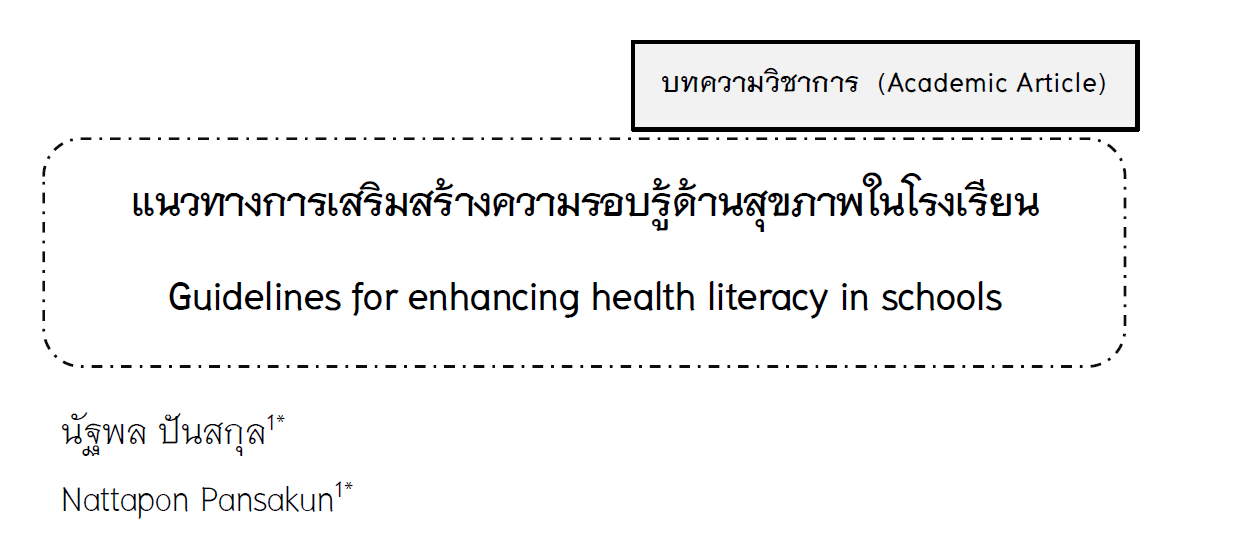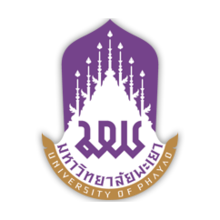Guidelines for Enhancing Health Literacy in Schools
Keywords:
Human development, Health promotion, Health literacy, Health-promoting school, School-age children’s healthAbstract
Investing in health literacy for school-age children is of utmost importance, particularly in developing regions, as it can serve as the foundation for the development of a cost-effective healthcare system. Equipping school-age children and school personnel with health knowledge not only promotes good health outcomes in the present but also ensures a healthier future. The aim of this article is to provide a comprehensive understanding of health literacy, highlight its importance among school-age children, explore its relationship with health status and educational outcomes, and present the standards for promoting health literacy in schools across eight domains. Additionally, the academic article addresses directions for action on health literacy in schools. These guidelines can hold immense significance for the comprehensive development of school-age children in the 21st century, addressing their physical, mental, social, and spiritual well-being. Integration of health education with formal education sets practical objectives and fosters a deeper understanding of the critical role of health literacy in children's growth.
References
Bartelink, N., & Bessems, K. (2019). Health promoting schools in Europe State of the art. Maastricht, the Netherlands: Schools for Health in Europe.
Brach, C., & Harris, L. M. (2021). Healthy people 2030 health literacy definition tells organizations: Make information and services easy to find, understand, and use. Journal of General Internal Medicine, 36(4), 1084-1085.
Bröder, J., Chang, P., Kickbusch, I., Levin-Zamir, D., McElhinney, E., Nutbeam, et al. (2018). IUHPE Position statement on health literacy: A practical vision for a health literate world. Global Health Promotion, 25(4), 79-88.
Dadaczynski, K., Rathmann, K., Hering, T., & Okan, O. (2020). The role of school leaders’ health literacy for the implementation of health promoting schools. International Journal of Environmental Research and Public Health, 17(6), 1855.
Dick, B., & Ferguson, B. J. (2015). Health for the world's adolescents: A second chance in the second decade. Journal of Adolescent Health, 56(1), 3-6.
Donnelly, J. E., Hillman, C. H., Castelli, D., Etnier, J. L., Lee, S., Tomporowski, P., et al. (2016). Physical activity, fitness, cognitive function, and academic achievement in children: a systematic review. Medicine and Science in Sports and Exercise, 48(6), 1197.
Fleary, S. A., Joseph, P., & Pappagianopoulos, J. E. (2018). Adolescent health literacy and health behaviors: A systematic review. Journal of Adolescence, 62, 116-127.
Fretian, A., Bollweg, T. M., Okan, O., Pinheiro, P., & Bauer, U. (2020). Exploring associated factors of subjective health literacy in school-aged children. International Journal of Environmental Research and Public Health, 17(5), 1720.
Inchley, J., Currie, D., & Young, T. (2016). Growing up unequal: gender and socioeconomic differences in young people's health and well-being. Health Behaviour in School-aged Children (HBSC) study: International report from the 2013/2014 survey (No. 7). World Health Organization.
Kickbusch, I., Pelikan, J. M., Apfel, F. and Tsouros, A. D. (2013). Health literacy: The solid facts. Geneva: World Health Organization.
Kirchhoff, S., Dadaczynski, K., Pelikan, J. M., Zelinka-Roitner, I., Dietscher, C., Bittlingmayer, U. H., et al.. (2022). Organizational health literacy in schools: Concept development for health-literate schools. International Journal of Environmental Research and Public Health, 19(14), 8795.
Langford, R., Bonell, C. P., Jones, H. E., Pouliou, T., Murphy, S. M., Waters, E., et al. (2014). The WHO Health Promoting School framework for improving the health and well‐being of students and their academic achievement. Cochrane Database of Systematic Reviews, (4). from https://doi.org/10.1002/14651858.CD008958.pub2.
McDaid, D. (2017). Investing in health literacy: What do we know about the co-benefits to the education sector of actions targeted at children and young people?, Copenhagen. Denmark: WHO Regional Office for Europe.
Nash, R., Elmer, S., Thomas, K., Osborne, R., MacIntyre, K., Shelley, B., et al. (2018). HealthLit4Kids study protocol; crossing boundaries for positive health literacy outcomes. BMC Public Health, 18(1), 1-13.
Nutbeam, D., & Muscat, D. M. (2021). Health promotion glossary 2021. Health Promotion International, 36(6), 1578-1598.
Nutbeam, D., McGill, B., & Premkumar, P. (2018). Improving health literacy in community populations: a review of progress. Health Promotion International, 33(5), 901-911.
Okan, O., Kirchhoff, S., & Bauer, U. (2021). Health literate schools (HeLit-Schools): Organizational health literacy in the school setting. European Journal of Public Health, 31(Suppl. 3), 56. From https://doi.org/10.1093/eurpub/ckab164.145.
Okan, O., Paakkari, L., & Dadaczynski, K. (2020). Health literacy in schools. State of the Art. Retrieved October 20, 2023, from https://www.schoolsforhealth.org/sites/default/files/editor/fact-sheets/factsheet-2020-english.pdf.
Okan, O., Paakkari, L., Jourdan, D., Barnekow, V., & Weber, M. W. (2023). The urgent need to address health literacy in schools. The Lancet, 401(10374), 344.
Ozturk, F. O., & Ayaz-Alkaya, S. (2020). Health literacy and health promotion behaviors of adolescents in Turkey. Journal of Pediatric Nursing, 54, e31-e35.
Paakkari, L. T., Torppa, M. P., Paakkari, O.-P., Välimaa, R. S., Ojala, K. S., & Tynjälä, J. A. (2019). Does health literacy explain the link between structural stratifiers and adolescent health?. European journal of public health, 29(5), 919-924.
Paakkari, L., & Okan, O. (2019). Health literacy—Talking the language of (school) education. Health Literacy Research and Practice, 3(3), e161-e164.
Paakkari, L., Inchley, J., Schulz, A., Weber, M. W., & Okan, O. (2019). Addressing health literacy in schools in the WHO European Region. Public Health Panorama, 5(2-3), 186-189.
Paakkari, L., Kokko, S., Villberg, J., Paakkari, O., & Tynjälä, J. (2017). Health literacy and participation in sports club activities among adolescents. Scandinavian Journal of Public Health, 45(8), 854-860.
Paakkari, L., Torppa, M., Mazur, J., Boberova, Z., Sudeck, G., Kalman, M., et al. (2020). A comparative study on adolescents’ health literacy in Europe: Findings from the HBSC study. International Journal of Environmental Research and Public Health, 17(10), 3543.
Santana, S., Brach, C., Harris, L., Ochiai, E., Blakey, C., Bevington, F., Kleinman, D., & Pronk, N. (2021). Practice full report: Updating health literacy for healthy people 2030: Defining its importance for a new decade in public health. Journal of Public Health Management and Practice, 27(6), S258.
Santha, A., Bittlingmayer, U. H., Bollweg, T. M., Gerdes, J., Okan, O., Ökcu, G., at al. (2021). Health literacy and its determinants in 11 and 12-year-old school children in Germany. In: Saboga-Nunes L. A., Bittlingmayer U. H., Okan O., & Sahrai D. (eds.), New approaches to health literacy. Wiesbaden: Gesundheit und Gesellschaft. Springer VS. form https://doi.org/10.1007/978-3-658-30909-1_10.
Shih, S.-F., Liu, C.-H., Liao, L.-L., & Osborne, R. H. (2016). Health literacy and the determinants of obesity: a population-based survey of sixth grade school children in Taiwan. BMC Public Health, 16(1), 1-8.
The Lancet. (2022). Why is health literacy failing so many? The Lancet, 400(10364), 1655.
Vamos, S., Okan, O., Sentell, T., & Rootman, I. (2020). Making a case for “Education for health literacy”: An international perspective. International Journal of Environmental Research and Public Health, 17(4), 1436.
Videto, D. M., & Dake, J. A. (2019). Promoting health literacy through defining and measuring quality school health education. Health Promotion Practice, 20(6), 824-833.
World Health Organization. (2014). Health in all policies: Helsinki statement. Framework for Country Action.
World Health Organization. (2017). Shanghai declaration on promoting health in the 2030: Agenda for sustainable development (No. WHO/NMH/PND/17.8). World Health Organization.
World Health Organization. (2021). Health literacy in the context of health, well-being and learning outcomes the case of children and adolescents in schools: The case of children and adolescents in schools (No. WHO/EURO: 2021-2846-42604-59268). World Health Organization Regional Office for Europe.
World Health Organization. (2022). Roadmap for implementation of health promoting schools in the South-East Asia region. New Delhi, India: World Health Organization, Regional Office for South-East Asia.

Downloads
Published
How to Cite
Issue
Section
License
Copyright (c) 2024 Phayao University

This work is licensed under a Creative Commons Attribution-NonCommercial-NoDerivatives 4.0 International License.
ผู้นิพนธ์ต้องรับผิดชอบข้อความในบทนิพนธ์ของตน มหาวิทยาลัยพะเยาไม่จำเป็นต้องเห็นด้วยกับบทความที่ตีพิมพ์เสมอไป ผู้สนใจสามารถคัดลอก และนำไปใช้ได้ แต่จะต้องขออนุมัติเจ้าของ และได้รับการอนุมัติเป็นลายลักษณ์อักษรก่อน พร้อมกับมีการอ้างอิงและกล่าวคำขอบคุณให้ถูกต้องด้วย
The authors are themselves responsible for their contents. Signed articles may not always reflect the opinion of University of Phayao. The articles can be reproduced and reprinted, provided that permission is given by the authors and acknowledgement must be given.







